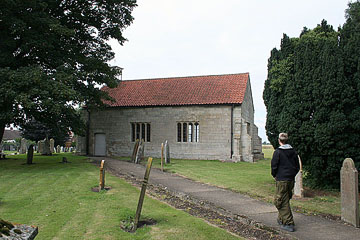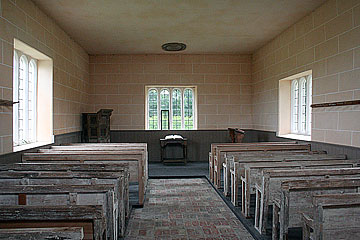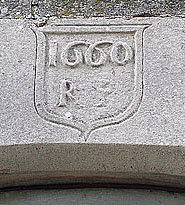Here’s a rather unusual thing. Tucked away at the end of this little fenland village is a small chapel, built in 1660: the last year of the protectorate. It is very rare to find any ecclesiastical buildings built between 1649 and 1660 in England, and as far as I know this is the only such in Cambridgeshire.
It isn’t entirely clear what it was built for, originally. Piecing together the history, it was probably a Nonconformist chapel of some persuasion to start with, but was annexed, following the 1662 Act of Uniformity, to be a chapel of ease for Wisbech St Mary, so to save the parishioners the nuisance of having to travel miles across the fends to get to church. It is now redundant, and cared for by the Churches Conservation Trust.
It is a tiny building: a single small room, built of brick and stone. There are elegant four-light mullioned windows, and the only external elaboration is a little wooden bell-cage at the top of the west wall. It sits in a large yard on the edge of the fields, overlooked by some lovely big trees.
The chapel is kept locked, but there is a keyholder listed nearby (though I fear they don’t get many visitors: the keyhole was rather covered up with cobwebs). Inside, the effect of simplicity is very striking.
The Trust’s churches are normally austere places, devoid of much save stone, wood and clear light, but that is often a rather artificial appearance, due to previous lack of care or preservation. Here, it is original: this was a bare preaching house, and (save for the peach-coloured paint on the walls, which I doubt is authentic) it remains unchanged.
There is a low false roof over the room – no decorative rafters or beams here – and the east end is dominated by the high Jacobean pulpit in the north-east corner.
Best of all are the benches. They are made of oak so old that it has become like driftwood: soft-edged, deep-grained and silvery. They are placed very close together so that people couldn’t kneel (a Papish custom, you see).
It was a quiet and surprisingly warm place. We’d spent our day in the fens visiting a lot of rather grim Victorian churches, or medieval structures neglected or desecrated by later generations. This was a welcome breath of light and serenity.
I even felt well-disposed enough to copy down a poem that John Betjeman wrote while he was President of the Friends of Guyhirn Chapel of Ease:
In brick and stone and glass and wood
Three centuries has this beacon stood
“Puritan relic of the past”
Built to shine and built to last
Long on its one East Anglian level
It praises God and shames the devil.
Guyhirn Chapel is kept locked, but there are nearby keyholders listed.



